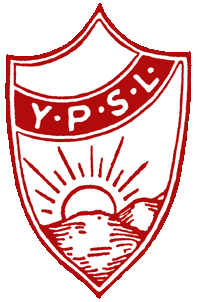Max Shachtman was an American Marxist theorist. He went from being an associate of Leon Trotsky to a social democrat and mentor of senior assistants to AFL-CIO President George Meany.
James Robertson (1928–2019) was the long-time and founding National Chairman of the Spartacist League (US), the original national section of the International Communist League. In his later years, Robertson was consultative member of the ICL's international executive committee.
The Young People's Socialist League (YPSL), founded in 1989, was the official youth arm of the Socialist Party USA. The group comprises party members under the age of 30. It shared the same name as the Young People's Socialist League which was affiliated with the Socialist Party of America.
Julius Jacobson was an American socialist writer and editor who edited Anvil,New International, and New Politics, all publications in the Third Camp tradition of socialism, a democratic Marxist tradition sometimes called "Shachtmanite" after its significant theorist, Max Shachtman.
Student Peace Union (SPU) was a nationwide student organization active on college campuses in the United States from 1959 to 1964. Its national headquarters were located near the campus of the University of Chicago.

Dorothy Ray Healey was a long-time activist in the Communist Party USA, from the late 1920s to the 1970s. In the 1930s, she was one of the first union leaders to advocate for the rights of Chicanos and blacks as factory and field workers.
Sy Landy was an American Trotskyist politician.
Bogdan Denitch was an American sociologist of Yugoslav origin. He was a leading authority on the political sociology of the former Yugoslavia, and served as professor at the City University of New York (CUNY) from 1973 until his retirement in 1994. Denitch was active in democratic left politics throughout his life, joining the Young People's Socialist League at age 18, and later co-founding the Democratic Socialists of America. From 1983 through 2004 he organized the annual Socialist Scholars Conference in New York. Since the 1990s he has been an advocate for human rights and an opponent of nationalism in the former Yugoslavia.

The Young People's Socialist League (YPSL), founded in 1907, was the official youth arm of the Socialist Party of America. Its political activities tend to concentrate on increasing the voter turnout of young democratic socialists and social democrats affecting the issues impacting that demographic group.
Phyllis Jacobson was an American socialist. Together with her lifetime political and personal partner Julius Jacobson, she co-edited the independent left journal New Politics from the 1960s until the end of the 20th century.
The American Left consists of individuals and groups that have sought egalitarian changes in the economic, political and cultural institutions of the United States. Various subgroups with a national scope are active. Liberals and progressives believe that equality can be accommodated into existing capitalist structures, but they differ in their criticism of capitalism and on the extent of reform and the welfare state. Anarchists, communists and socialists with international imperatives are also present within this macro-movement. Many communes and egalitarian communities have existed in the United States as a sub-category of the broader intentional community movement, some of which were based on utopian socialist ideals. The left has been involved in both Democratic and Republican parties at different times, having originated in the Democratic-Republican Party as opposed to the Federalist Party.
The Spartacist League is a Trotskyist political grouping. They are the United States section of the International Communist League, formerly the International Spartacist Tendency. This Spartacist League named themselves after the original Spartacus League of Weimar Republic in Germany, but the current League has no formal descent from it. The League self-identifies as a "revolutionary communist" organization.

Tom David Kahn was an American social democrat known for his leadership in several organizations. He was an activist and influential strategist in the Civil Rights Movement. He was a senior adviser and leader in the U.S. labor movement.
The Student League for Industrial Democracy (SLID) of 1946 to 1959 was the second incarnation of the League for Industrial Democracy's student group. It changed its name to the Students for a Democratic Society on January 1, 1960, and severed its connection to the LID in 1965.
The International Socialists (1968–1986) was a Third Camp Trotskyist group in the United States.
Hal Draper was an American socialist activist and author who played a significant role in the Berkeley, California Free Speech Movement. He is known for his extensive scholarship on the history and meaning of the thought of Karl Marx.
The Workers Party (WP) was a Third Camp Trotskyist group in the United States. It was founded in April 1940 by members of the Socialist Workers Party who opposed the Soviet invasion of Finland and Leon Trotsky's belief that the USSR under Joseph Stalin was still innately proletarian, a "degenerated workers' state." They included Max Shachtman, who became the new group's leader, Hal Draper, C. L. R. James, Raya Dunayevskaya, Martin Abern, Joseph Carter, Julius Jacobson, Phyllis Jacobson, Albert Glotzer, Stan Weir, B. J. Widick, and Irving Howe. The party's politics are often referred to as "Shachtmanite."

Edward Michael Harrington Jr. was an American democratic socialist, writer, author of The Other America, political activist, political theorist, professor of political science, radio commentator and founding member of the Democratic Socialists of America.
The Socialist Workers Party (SWP) is known as a communist party in the United States. Originally a group in the Communist Party USA that supported Leon Trotsky against Soviet leader Joseph Stalin, it places a priority on "solidarity work" to aid strikes and is strongly supportive of Cuba. The SWP publishes The Militant, a weekly newspaper that dates back to 1928. It also maintains Pathfinder Press.
The history of left-wing politics in the United States consists of a broad range of individuals and groups that have sought fundamental egalitarian changes. Left-wing activists in the United States have been credited with advancing social change on issues such as labor and civil rights as well as providing critiques of capitalism.



